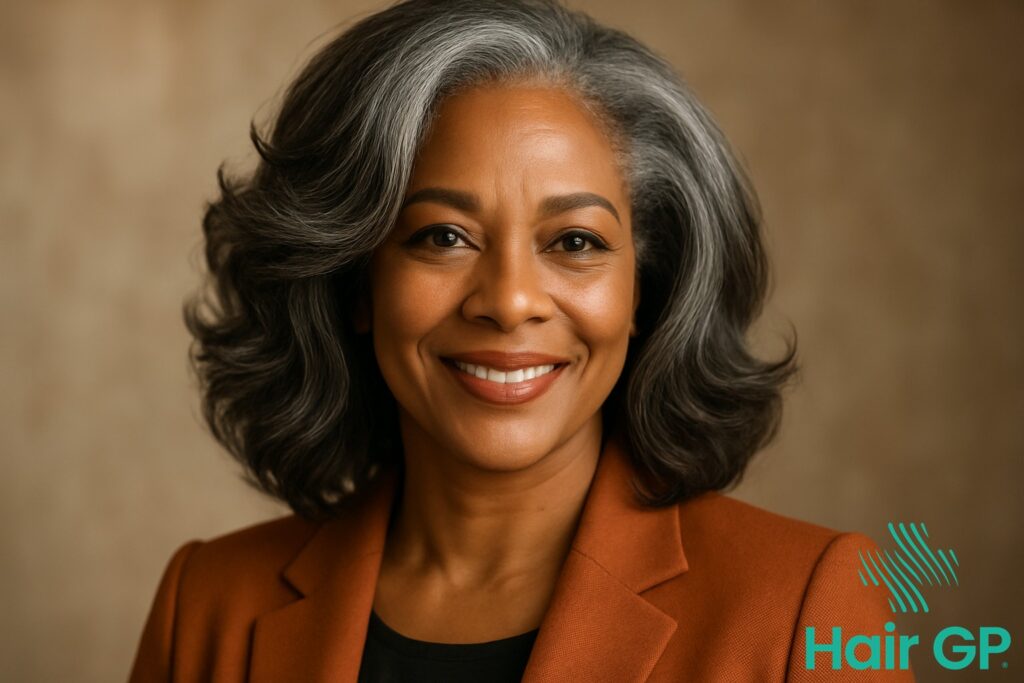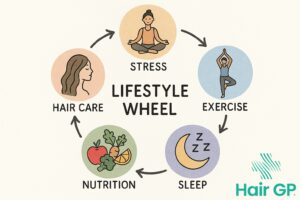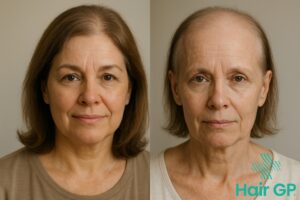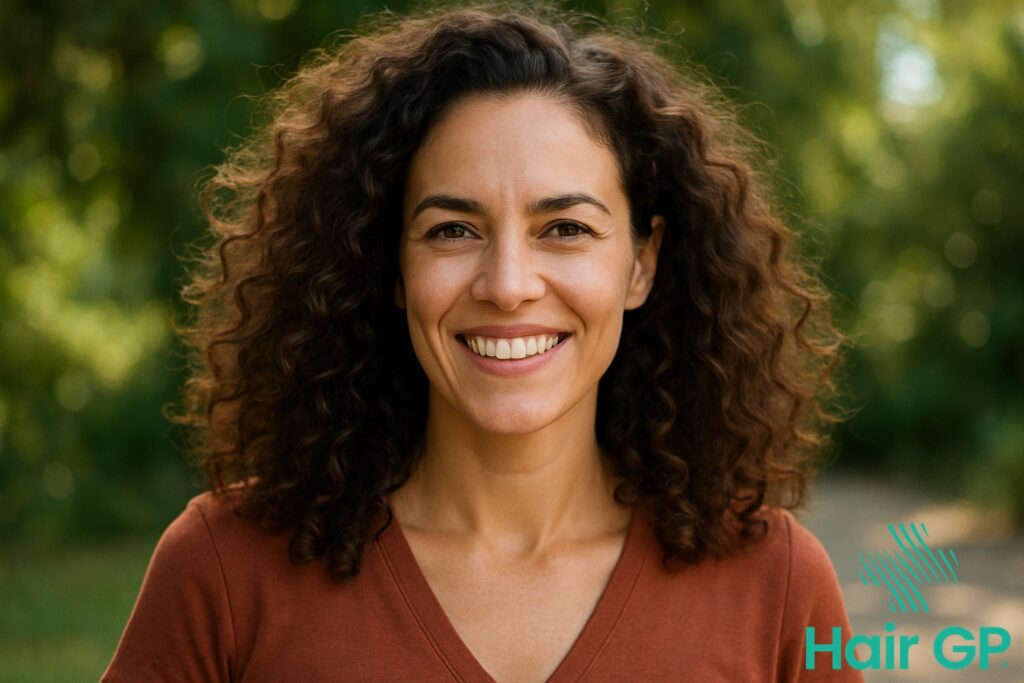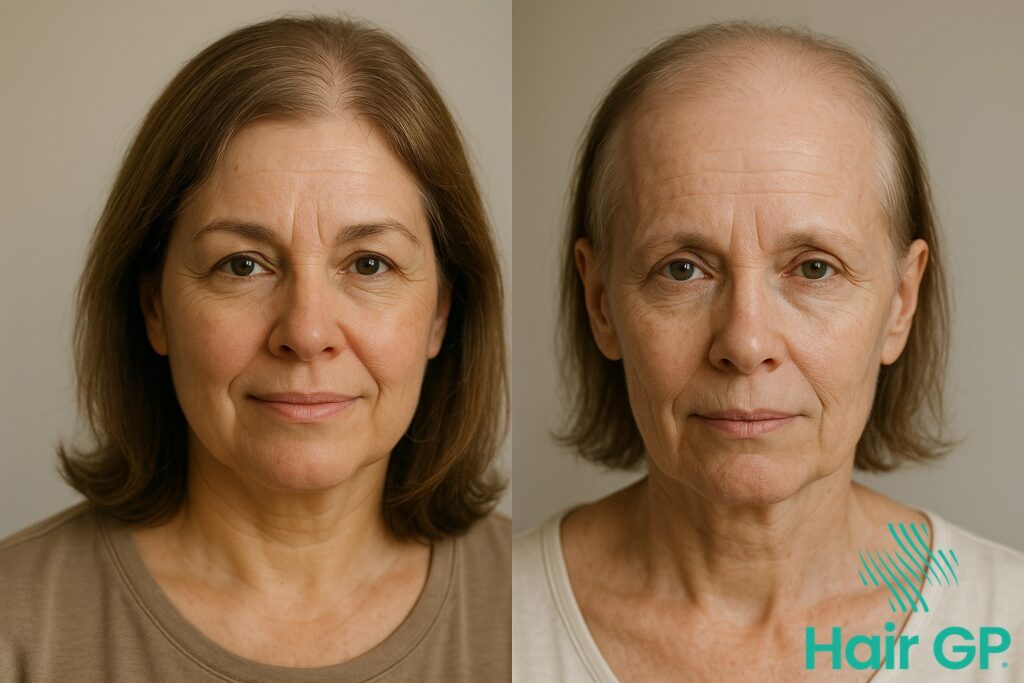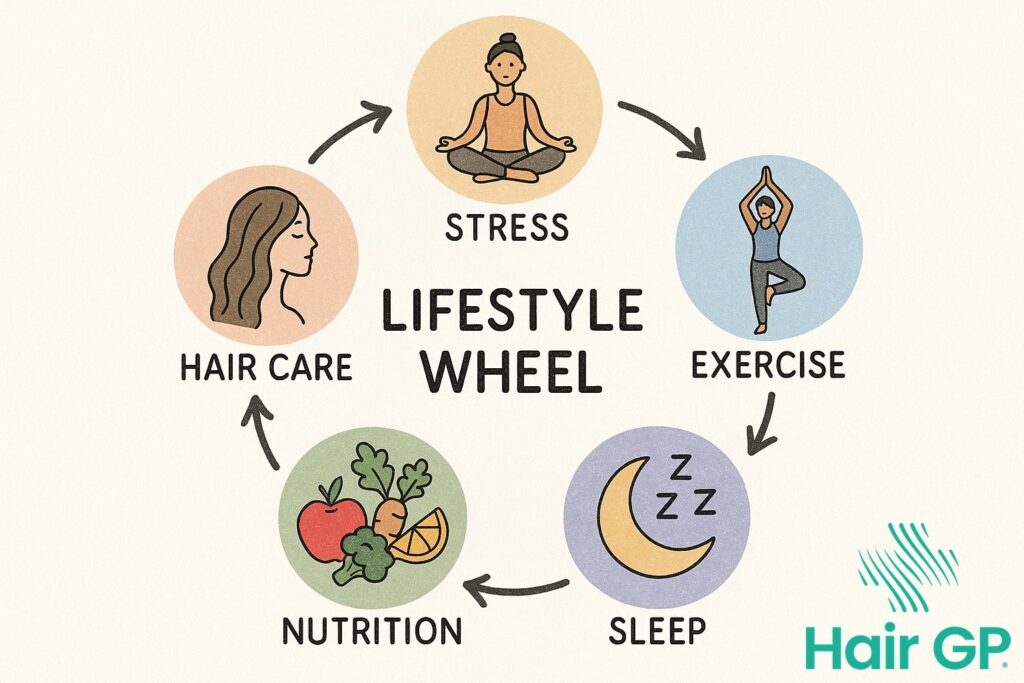Introduction
For many women, the menopause transition brings unexpected changes to their hair, from noticeable hair thinning to shifts in texture and appearance. These menopause hair changes are amongst the most common yet least discussed menopausal symptoms, often causing concern and affecting self-confidence. As hormone levels fluctuate and eventually decline during this natural life stage, your hair follicles respond to these biological shifts, potentially leading to hair loss, dryness, and changes in overall hair quality.
This comprehensive guide explores why hormonal changes during menopause impact your hair health, examining the science behind these transformations. We’ll identify the various hair changes you might experience, from subtle thinning to more significant pattern hair loss. You’ll discover evidence-based medical treatments and natural approaches to support your hair during this transition, helping you make informed decisions about managing these changes whilst maintaining healthy, vibrant hair throughout menopause and beyond.
Key Takeaways – TL/DR
- Declining oestrogen levels during menopause can cause hair thinning, texture changes, and increased hair loss
- Female pattern hair loss affects up to 40% of women by age 50, often accelerating during menopause
- Treatment options include hormone therapy, minoxidil, and lifestyle changes to support hair health
- Natural remedies like scalp massage, nutritional supplements, and a healthy diet can help maintain hair density
Why Does Menopause Affect Your Hair?
Understanding why menopause affects your hair begins with recognising the profound hormone changes occurring during this transition. Throughout reproductive years, oestrogen and progesterone support healthy hair follicles and maintain the normal hair growth cycle. However, as these hormones decline during menopause, the delicate balance that keeps hair thick and lustrous begins to shift [1].
When oestrogen levels drop, androgens (male hormones present in all women) become relatively more dominant. This hormonal imbalance can trigger androgenetic alopecia, commonly known as female pattern hair loss. Research indicates that up to 40% of women experience noticeable hair thinning by age 50, with prevalence increasing significantly during and after menopause [2].
The hair growth cycle itself becomes disrupted during menopause. Hair follicles spend less time in the growth phase (anagen) and more time in the resting phase (telogen), resulting in shorter, finer hairs. Additionally, the follicles may shrink, producing progressively thinner strands. This process, called miniaturisation, is characteristic of female pattern hair loss and explains why many women notice their ponytails becoming smaller and their partings wider during menopause.
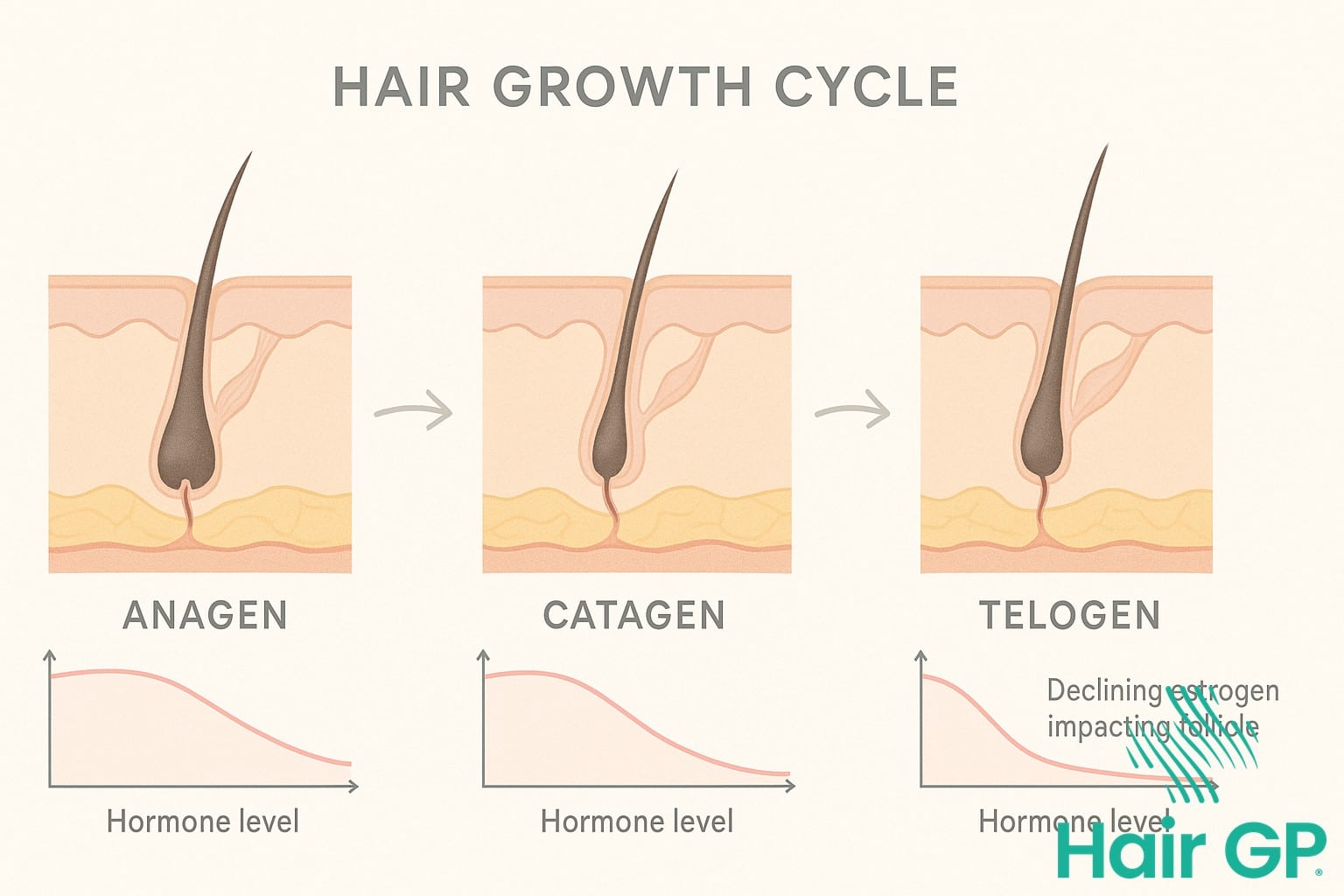
Common Hair Changes During Menopause
The hormonal shifts during menopause can trigger a variety of hair changes that affect up to 50% of women[1]. Understanding these common transformations helps you recognise what’s happening and know that you’re not alone in experiencing these symptoms.
Hair Thinning and Loss Patterns
The most noticeable change many women experience is hair thinning, particularly along the crown and parting. You might notice your hair part widening gradually, revealing more scalp than before. This overall density reduction occurs as hair follicles become more sensitive to hormonal changes, producing finer strands that provide less coverage. Unlike male pattern baldness, menopausal thinning hair typically affects the entire scalp rather than creating distinct bald patches. Some women also observe subtle hairline changes, particularly around the temples, though this is usually less pronounced than the general hair density reduction across the scalp.
Texture and Quality Changes
Beyond thinning, your hair texture may undergo surprising transformations. Many women report their hair feels wirier or coarser than before, losing its familiar softness. Dry hair becomes increasingly common as oil production decreases, leading to brittle hair that breaks more easily. Intriguingly, some women find their previously straight hair suddenly curly or wavy, whilst others experience the opposite effect. Frizz increases for many, making hair harder to manage and style. Additionally, grey hair often emerges more rapidly during this time, as melanin production naturally declines alongside other hormonal changes.
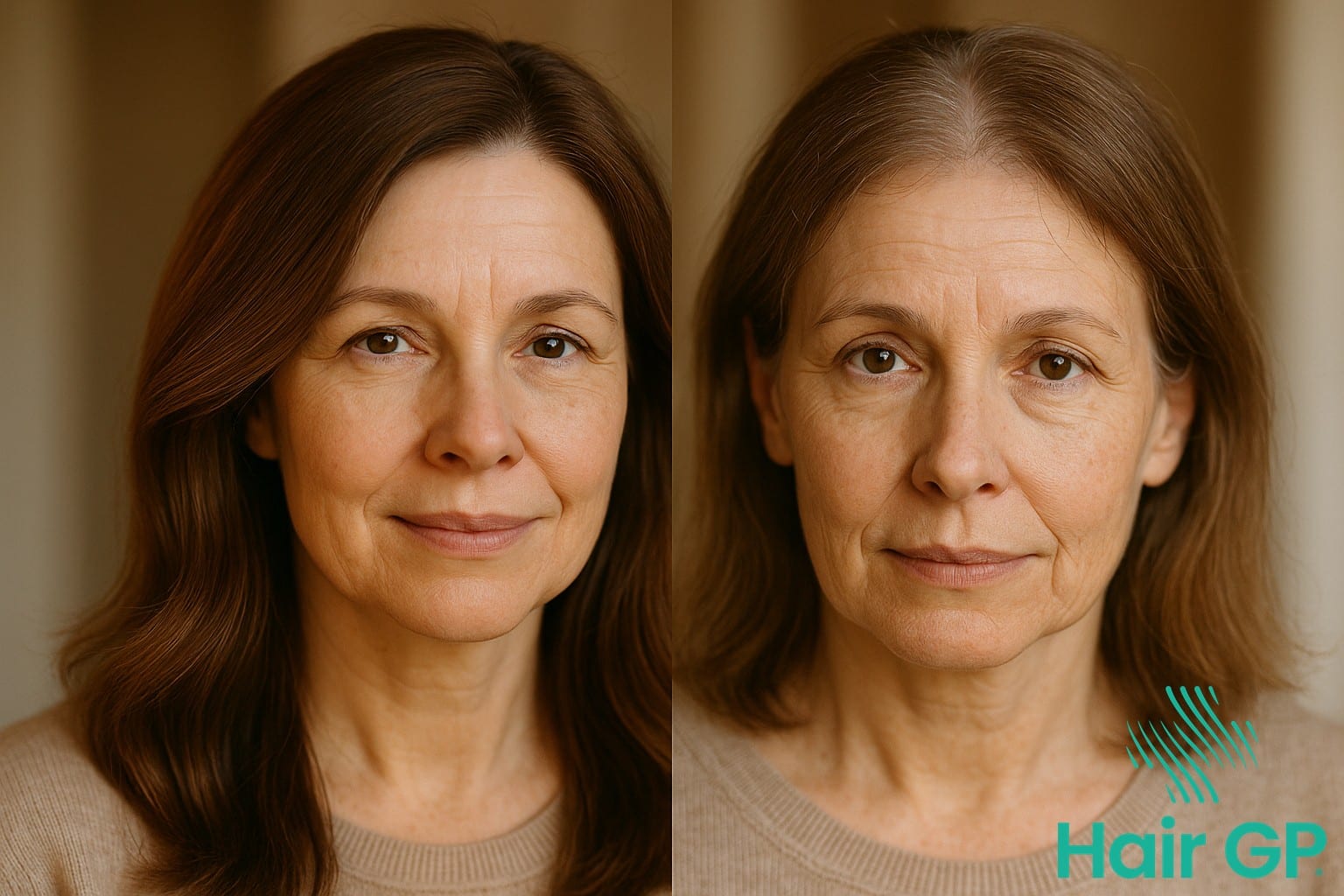
Treatment Options for Menopausal Hair Loss
When women experience hair loss during menopause, several evidence-based treatments can help stimulate regrowth and slow further thinning. From medical interventions like HRT to accessible over-the-counter options, understanding your choices enables informed decisions about managing menopausal hair changes.
Medical Treatments
Hormone replacement therapy (HRT) may benefit women experiencing significant hair thinning, as oestrogen can help prolong the hair growth phase and prevent telogen effluvium [3]. However, results vary individually, and consultation with your doctor is essential to weigh benefits against risks. Prescription-strength minoxidil (5%) shows greater effectiveness than lower concentrations, though it requires ongoing use to maintain results. Some specialists may recommend spironolactone or finasteride for women with androgenetic alopecia causing hair thinning.
Over-the-Counter Solutions
The 2% minoxidil solution, available without prescription, helps approximately 60% of women achieve moderate hair regrows when used consistently [4]. Hair growth serums containing peptides and antioxidants may support scalp health, whilst volumising products create the appearance of fuller hair. Specialised shampoos with ketoconazole or caffeine can complement other treatments, though evidence remains limited. Remember that all treatments require patience—visible improvements typically take three to six months.
Natural Ways to Support Hair Health During Menopause
Supporting menopausal hair naturally begins with adopting a healthy diet rich in protein, iron, and omega-3 fatty acids. These nutrients provide essential building blocks for healthy hair growth whilst helping your body cope with hormonal changes. Include plenty of leafy greens, fatty fish, nuts, and seeds in your meals to nourish hair follicles from within.
Gentle scalp care routines can significantly improve hair health during this transition. Regular scalp massages boost circulation, whilst using mild, pH-balanced shampoos helps maintain hair’s pH levels. This prevents excessive dryness and keeps hair smooth despite hormonal fluctuations.
Managing stress through yoga, meditation, or regular walks supports overall wellbeing and reduces hair loss triggered by elevated cortisol levels. Consider adding vitamin D supplements, which research suggests may benefit menopausal hair. Simple lifestyle adjustments like staying hydrated, getting adequate sleep, and protecting hair from heat styling can make a remarkable difference in maintaining hair density and shine throughout menopause.
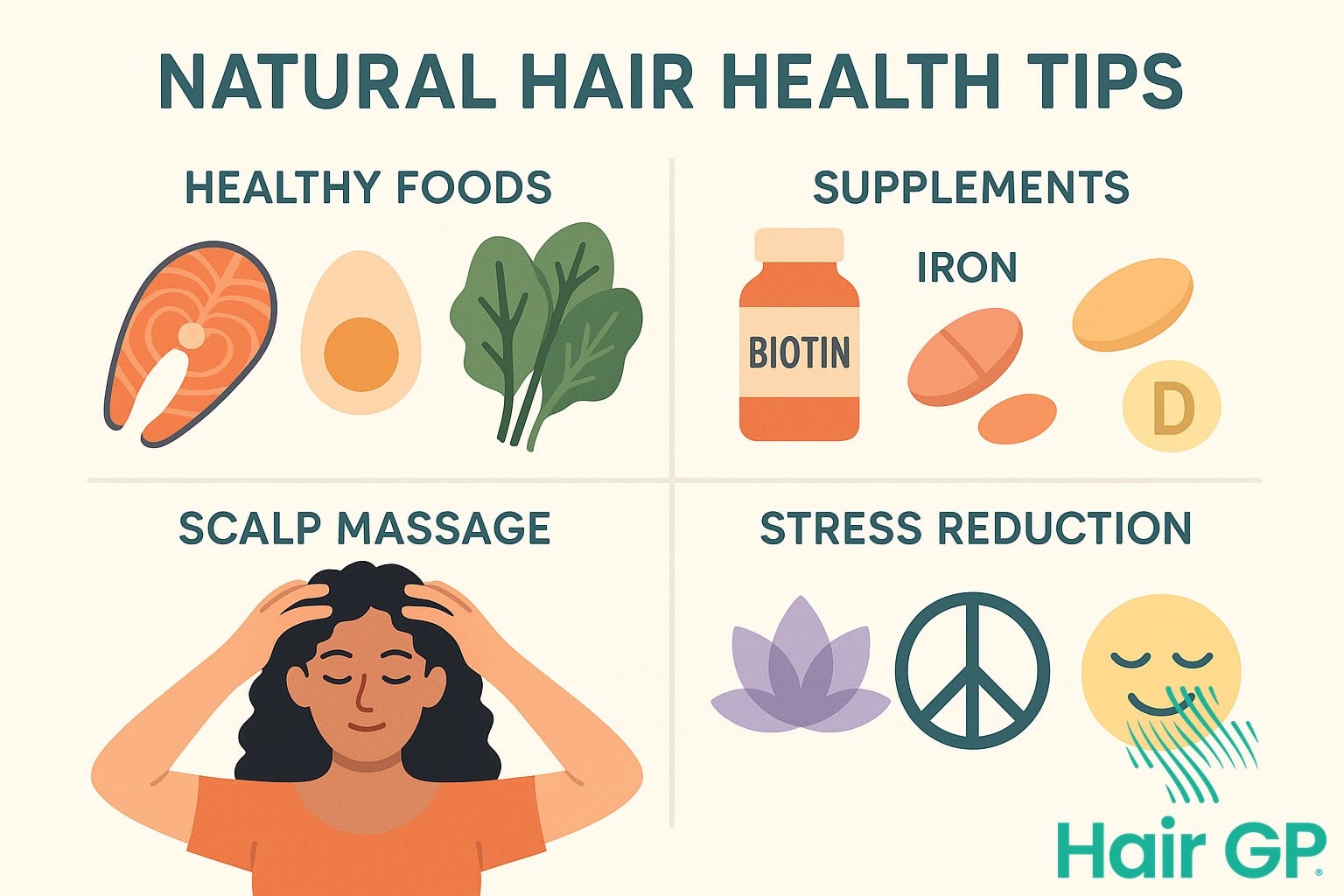
Conclusion
Understanding menopause hair changes represents an important step in managing this common yet challenging aspect of the menopausal transition. Whilst many perimenopausal and menopausal women experience alterations to their hair type, texture, and volume, it’s reassuring to know that effective solutions exist. From hormone replacement therapy to nutritional supplements, scalp treatments to lifestyle modifications, numerous approaches can help protect the hair shaft and maintain healthy hair growth during this time.
Remember that each woman’s experience is unique, and what works for one person may differ for another. Postmenopausal women who continue to experience hair concerns should feel empowered to seek professional guidance. A healthcare provider can assess your individual situation, considering factors such as hormone levels, nutritional status, and overall health to develop a personalised treatment plan.
With the right combination of medical support, proper hair care, and lifestyle adjustments, it’s entirely possible to maintain healthy, vibrant hair throughout menopause and beyond. Don’t hesitate to discuss your hair health concerns with your GP or a hai specialist who understands the complexities of menopausal changes.
Frequently Asked Questions
Hair loss during menopause isn’t always permanent. While some thinning may persist, many women find that with proper treatment and care, new hairs can grow and hair density can improve. Early intervention with treatments like minoxidil or HRT can help prevent further loss.
Hair changes often begin during perimenopause, which can start in your 40s. Many women notice gradual thinning, texture changes, or increased shedding as hormone levels begin to fluctuate, with changes becoming more noticeable during the menopause transition.
Yes, hot flashes can indirectly impact hair health. The stress from frequent hot flashes and night sweats can contribute to telogen effluvium (temporary hair shedding). Additionally, excessive sweating can affect scalp health and leaving hair feeling limp or greasy.
Menopausal hair loss typically causes gradual, diffuse thinning across the scalp, especially at the hair part and crown. Alopecia areata, an autoimmune condition, causes distinct round patches of complete hair loss and isn’t related to hormonal changes.
References
- Grymowicz M, Rudnicka E, Podfigurna A, et al. Hormonal Effects on Hair Follicles. Int J Mol Sci. 2020;21(15):5342.
- Mirmirani P. Managing hair loss in midlife women. Maturitas. 2013;74(2):119-122.
- Rishikaysh P, Dev K, Diaz D, et al. Signaling involved in hair follicle morphogenesis and development. Int J Mol Sci. 2014;15(1):1647-1670.
- Blume-Peytavi U, Hillmann K, Dietz E, et al. A randomized, single-blind trial of 5% minoxidil foam once daily versus 2% minoxidil solution twice daily in the treatment of androgenetic alopecia in women. J Am Acad Dermatol. 2011;65(6):1126-1134.

